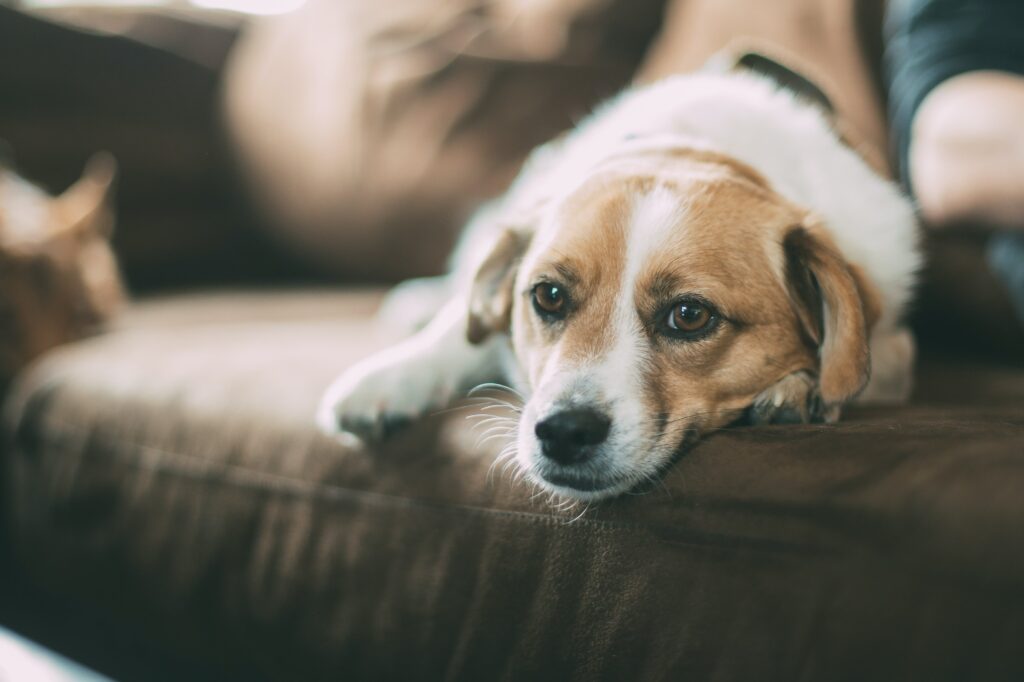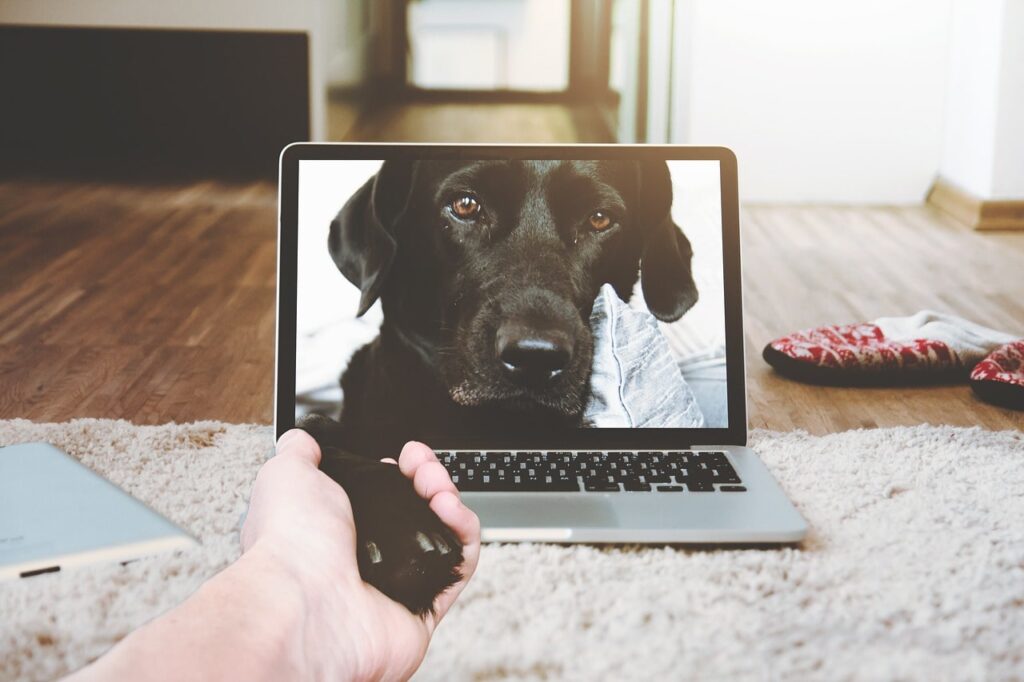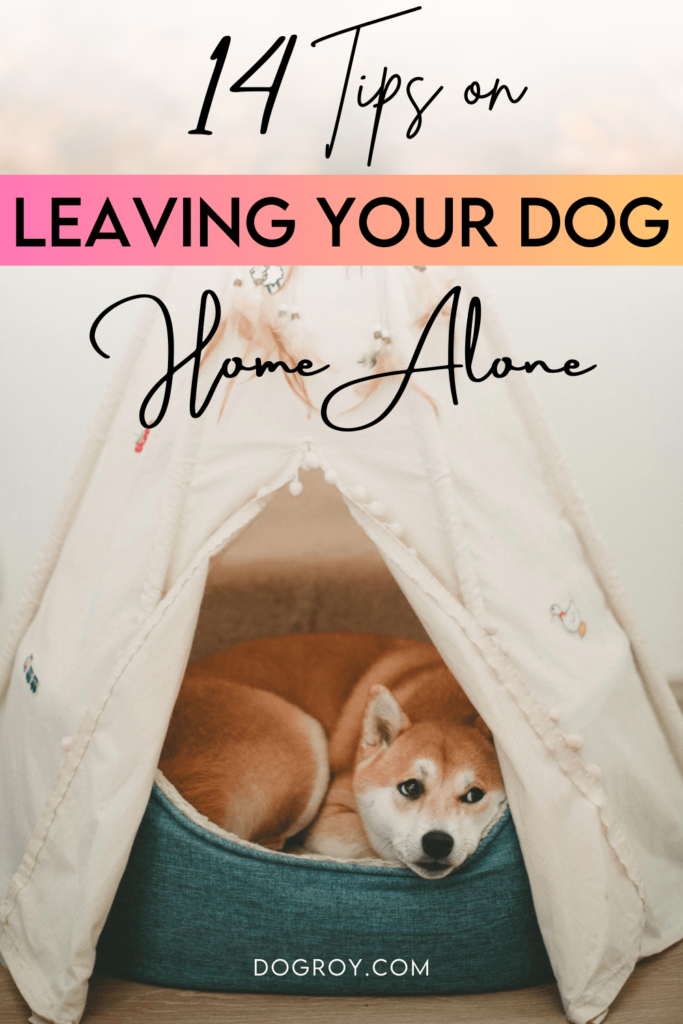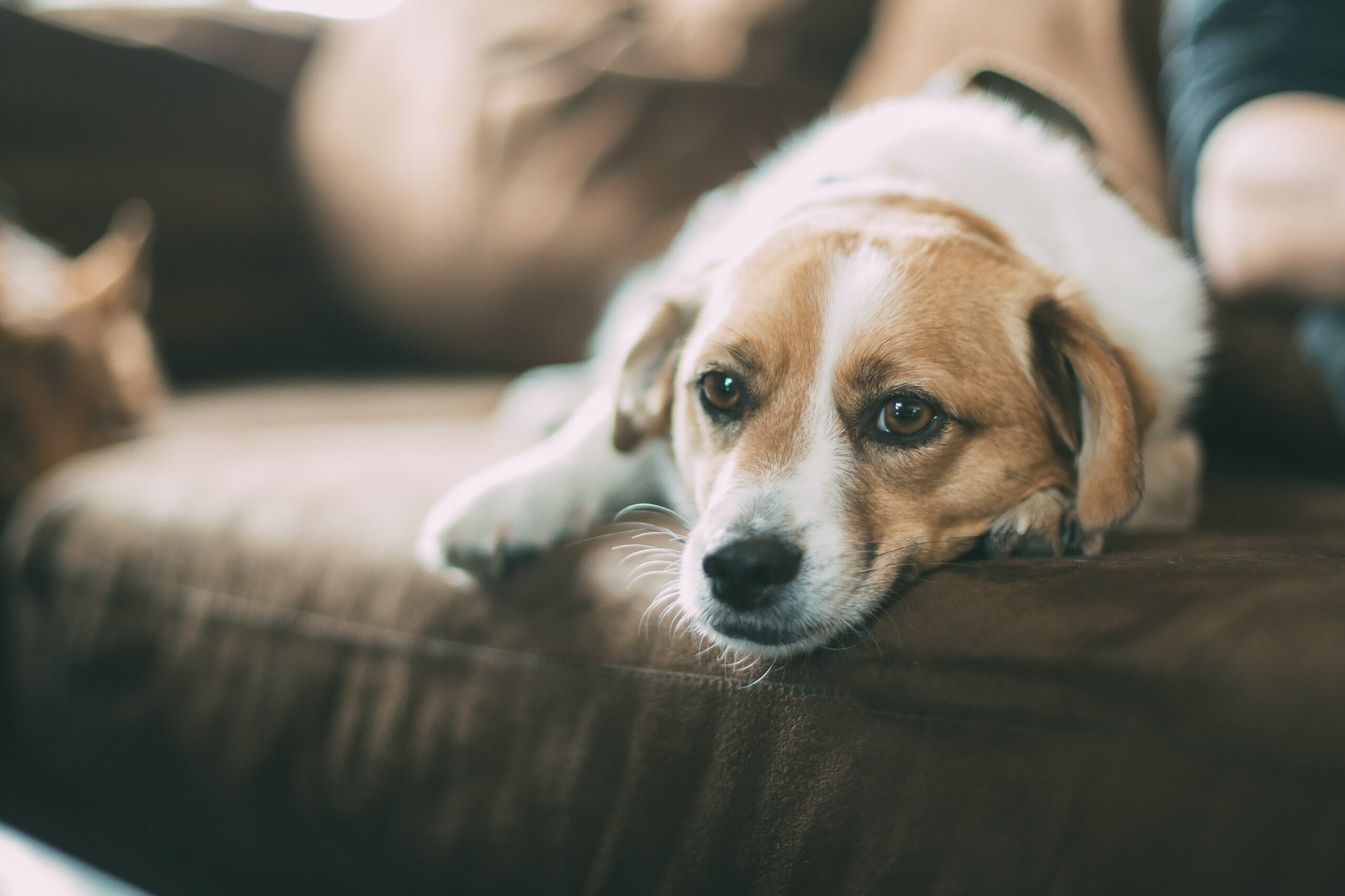Leaving your dog home alone while you’re at work can be a necessary part of modern pet ownership, but it often comes with concerns about your furry friend’s well-being and happiness.
In this comprehensive guide, we’ll explore 14 essential tips to master the art of leaving your dog home alone while at work, helping you ensure that your furry companion is comfortable, entertained, and emotionally supported during those hours of separation.
By implementing these strategies, you can foster a positive experience for your canine companion and alleviate any stress or anxiety associated with being home alone.
Table of Contents
Mastering Solitude: 14 Tips for Leaving Your Dog Home Alone While at Work

1] Establish a Routine
Creating a consistent daily routine for your dog is essential for their well-being.
Dogs thrive on predictability, and a set schedule helps them feel secure.
Consistent feeding times, walks, and play sessions before and after work establish a comforting routine for your furry friend.
This routine not only provides structure but also serves as a source of mental and physical stimulation, contributing to a balanced and contented dog.
2] Provide Mental Stimulation
Keeping your dog mentally stimulated is crucial for preventing boredom and anxiety.
Interactive toys or puzzle feeders are excellent tools to engage their minds.
These toys challenge your dog’s problem-solving skills and keep them entertained in your absence.
Toys that dispense treats during play offer both physical activity and mental enrichment, promoting a healthy and stimulated canine mind.
Tip: “Toys that dispense treats during play offer both physical activity and mental enrichment.”
3] Comfortable Resting Space
Designating a comfortable resting space for your dog is a key aspect of ensuring their well-being.
This space should include their bed, favorite toys, and perhaps an item with your scent, like a worn T-shirt.
Creating a cozy haven helps them relax and feel safe in your absence.
Dogs often seek out spaces that carry familiar scents and provide a sense of security, making this designated area a retreat for restful moments.
4] Use Dog Cameras

Investing in a dog camera is a modern solution to staying connected with your furry friend while you’re at work.
Many cameras allow two-way communication, enabling you to talk to and reassure your dog.
This virtual connection can ease separation anxiety and provide comfort.
Monitoring your dog’s behavior remotely also allows you to assess their well-being and address any concerns promptly.
Dog cameras not only provide peace of mind for owners but also offer dogs a familiar voice, reducing stress during alone time
5] Regular Exercise
Prioritizing morning exercise is a proactive approach to ensuring your dog is calm and rested during your work hours.
A tired dog is more likely to rest peacefully during your absence.
A brisk walk or play session helps expend excess energy, reduces anxiety, and minimizes the likelihood of destructive behavior.
Regular exercise is a fundamental component of maintaining your dog’s physical and mental health.
6] Interactive TV or Music
Leaving on a pet-friendly TV channel or soothing music contributes to creating an ambient atmosphere for your dog.
The visual and auditory stimulation can help your dog feel less alone and provide a comforting background noise.
Choose content designed for dogs, featuring calming visuals or canine-friendly tunes, to enhance the environment in your absence.
Harmonizing the Home Environment
Ensure your dog’s environment is optimized for relaxation and engagement:
- Dim the lights to create a cozy atmosphere.
- Place your dog’s favorite blanket or toy nearby.
- Adjust the volume to a level that provides companionship without overwhelming.
7] Positive Departures and Arrivals
Avoiding overly emotional departures and arrivals is crucial for preventing heightened anxiety in your dog.
Keep interactions low-key to maintain a sense of normalcy.
Gradually desensitizing your dog to your departure routine by avoiding prolonged goodbyes helps them understand that your leaving is a routine part of the day, reducing stress and anxiety.
Tip: “Gradually desensitize your dog to your leaving routine by keeping interactions low-key.”
8] Professional Dog Walker
Hiring a professional dog walker for midday breaks is a practical solution to ensure your dog receives necessary bathroom breaks, exercise, and companionship during the workday.
This investment in their well-being helps break up long periods of solitude and provides an opportunity for socialization with a trusted caregiver.
9] Doggy Daycare
Enrolling your dog in a reputable doggy daycare is an excellent way to address loneliness and provide social interaction.
Daycare offers the opportunity to interact with other dogs and receive attention from experienced staff.
This enriching environment can alleviate boredom, anxiety, and the negative effects of prolonged solitude, contributing to a happier and more balanced dog.
Tip: “Daycare offers interaction with other dogs and helps alleviate loneliness and boredom.”
10] Comforting Scents
Leaving an item with your scent, such as a piece of clothing or a blanket, is a simple yet effective way to provide comfort to your dog.
Familiar smells provide reassurance and can help ease separation anxiety.
Regularly rotating these items ensures the continued effectiveness of this strategy, making your dog feel connected to you even in your absence.
11] Training and Positive Reinforcement
Gradually training your dog to be comfortable alone is a process that requires positive reinforcement.
Start with short durations of separation and use treats or favorite toys to reward calm behavior.
Gradually increase the time as your dog becomes more accustomed to solitude.
Reinforcing independence through positive experiences helps build their confidence and reduces anxiety when left alone.
Through the steps of training, your dog learns the dance of contented independence
12] Pet Sitters
If possible, hiring a pet sitter for personalized attention is an excellent option.
Pet sitters can offer companionship, playtime, and additional care tailored to your dog’s specific needs.
This personalized approach ensures that your dog receives individualized care and attention, promoting their overall well-being during your absence.
13] Consider a Canine Companion
If feasible, consider adopting a second dog as a companion for your current furry friend.
Having a canine friend can provide social support, reducing feelings of isolation and loneliness.
It’s essential to ensure compatibility between the dogs and introduce them gradually to establish a positive relationship.
This approach adds a constant source of companionship, especially when you’re away.
14] Consult with a Veterinarian or Behaviorist
If your dog exhibits severe anxiety when left alone, seeking professional advice is crucial.
Consult with a veterinarian or a certified animal behaviorist to assess your dog’s specific needs.
They can recommend tailored strategies for addressing separation anxiety or, if necessary, prescribe anxiety-relieving medications.
Tip: “Tailored solutions or anxiety-relieving medications may be recommended.”
This personalized approach ensures a comprehensive solution to your dog’s emotional well-being.
Leaving Your Dog Home Alone While at Work: FAQs
How long can a dog be left alone during the workday?
Can all dogs adapt to being alone while at work?
Most dogs can adapt to being alone with the right training and preparation. However, some may experience separation anxiety. Consistent efforts and understanding your dog’s needs are essential for a successful adaptation.
Should I leave food out for my dog while at work?
Consider leaving out a portion of your dog’s daily food in puzzle feeders or interactive toys. This engages them mentally and provides a positive activity during your absence.
Is crate training a suitable option for alone time?
Crate training can be an option for some dogs if introduced gradually and positively. It provides a secure space and can prevent destructive behavior. However, it may not be suitable for all dogs.

Conclusion:
As you navigate the challenges of leaving your dog home alone while at work, remember that a thoughtful approach can make a significant difference in your pet’s overall well-being.
The 14 tips provided in this guide offer a holistic strategy, encompassing physical, mental, and emotional aspects to create a positive environment for your furry friend during your absence.
By incorporating these suggestions into your routine, you’ll not only address your dog’s needs but also strengthen the bond between you and your loyal companion, ensuring a happier and healthier experience when left home alone.





